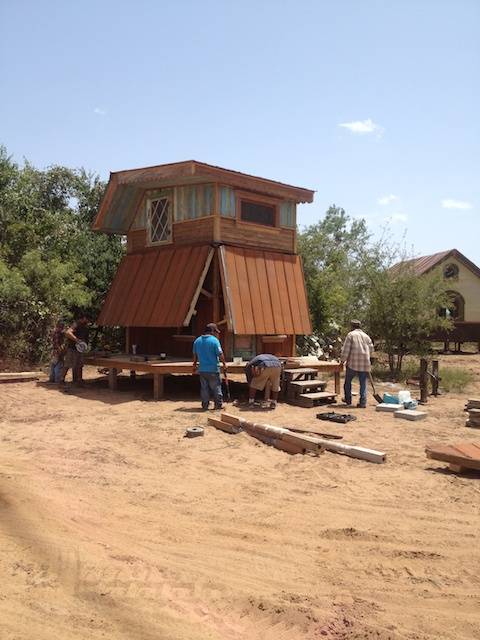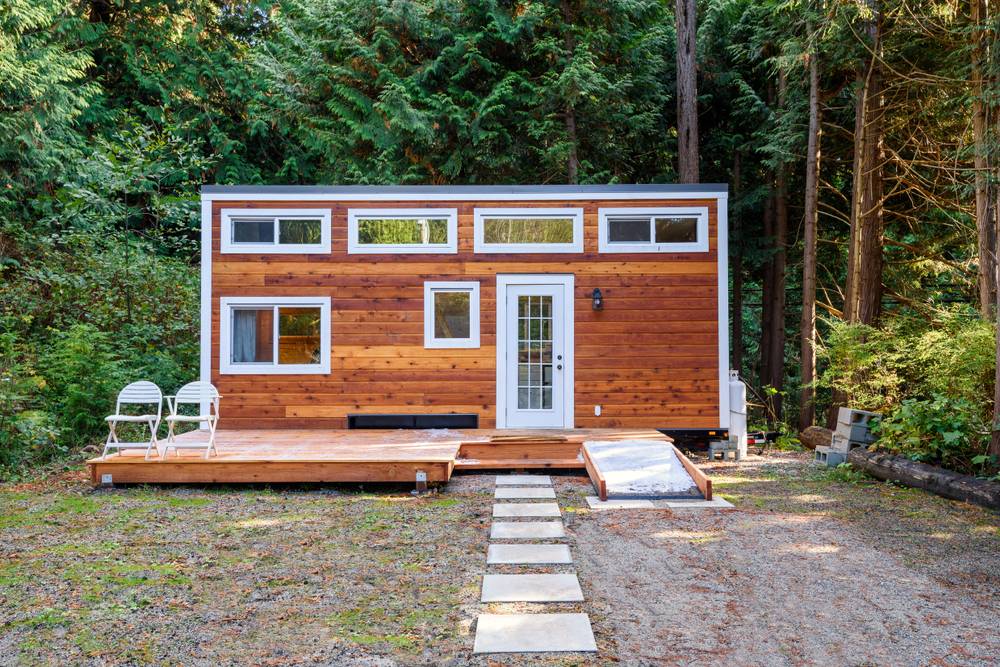The Houses
Tiny Houses. Tiny Homes. Little Houses. The Tiny House Movement. Odds are you’ve heard some combination of these words in the last couple of years and have at least a vague idea of what they are referring to. So just what is a “tiny house”? While definitions vary from a vague idea to very specific parameters, most would generally agree that a tiny house typically refers to a downsized house somewhere between 80-400 square feet, either on a stationary foundation or a trailer. As part of the definition, it typically requires a simplified lifestyle, keeping belongings to a bare minimum in order to have just the essentials.
Its an idea that goes back to the 1800’s and Henry David Thoreau’s focus on living simply–in a small space with only the essentials. Today’s tiny homes make the most efficient use of space, requiring their dwellers to downsize to just the necessities. Tiny house owners have many reasons for joining the tiny house movement, including the much smaller price tag than traditional homes, the ability to pick up and move without being tied down to a house, and the simple lifestyle it requires.
The homes can be bought prebuilt from many different companies and are readily available in the central Texas area. Others choose to build their own, from their own plans or from hundreds of different layouts online. Depending on materials used, whether one chooses to build the house themselves or hire a professional, and the size of the house, they can range anywhere from $15,000 to upwards of $85,000.

The People
So just what kind of people are downsizing and building or buying these miniature houses? While it might be assumed that it would be “granolas” concerned for the environment or those fiercely independent off-grid homesteaders, there really is no single type of person that can be classified as the tiny house type. Whether one is single, married, family with kids, just starting out, retired, or peak of career, tiny houses have owners in all categories.
The reasons for joining the tiny house movement are nearly as varied as the types of people it attracts. Some choose to do so because the cost of buying and maintaining a tiny house is typically much smaller than a typical home. Utilities are typically much less as well. Another reason is the freedom it brings, both in being able to take one’s house wherever job or whim take them and in having less belongings to deal with and pay for. Still others choose it because of the reduced carbon footprint of tiny homes. Especially when built with reclaimed materials, tiny houses have a much smaller impact on the environment than regular houses. They use less materials, electricity, water, gas, and other resources than a typical house, making them an affordable, green choice for many.
The Movement
Another large component of the growing popularity of tiny homes is the community aspect. A couple of the primary downsides of a tiny house is that there is typically not space for a laundry facility, or space for entertaining guests. “Tiny Villages” have started appearing on the horizon as a way for people to connect with like-minded people and to share spaces for laundry and entertaining. Another draw to these tiny villages is the sense of community, of knowing one’s neighbors and cooperating together. Often these villages will have a garden that is tended and used by all in the community.
These communities often start on vacant lots or rural land where it is affordable and easy to create a space for them that includes water, sewer and electricity (unless it is an “off-grid” community). Some areas of the country where there seems to be a larger number of tiny house dwellers include California, Oregon, and Texas. Central Texas is well suited for tiny houses and tiny house communities with its milder winters and abundance of sunshine, as well as the affordable land that can still be found close to the metropolitan areas of Austin, San Antonio and Houston.
Photo Credit: GoodHomeDesign
Want help?
Our Land Experts make finding your perfect property a priority and aim to make this process as easy as possible. They save you time, money, and uncover hidden issues for first-time buyers.

